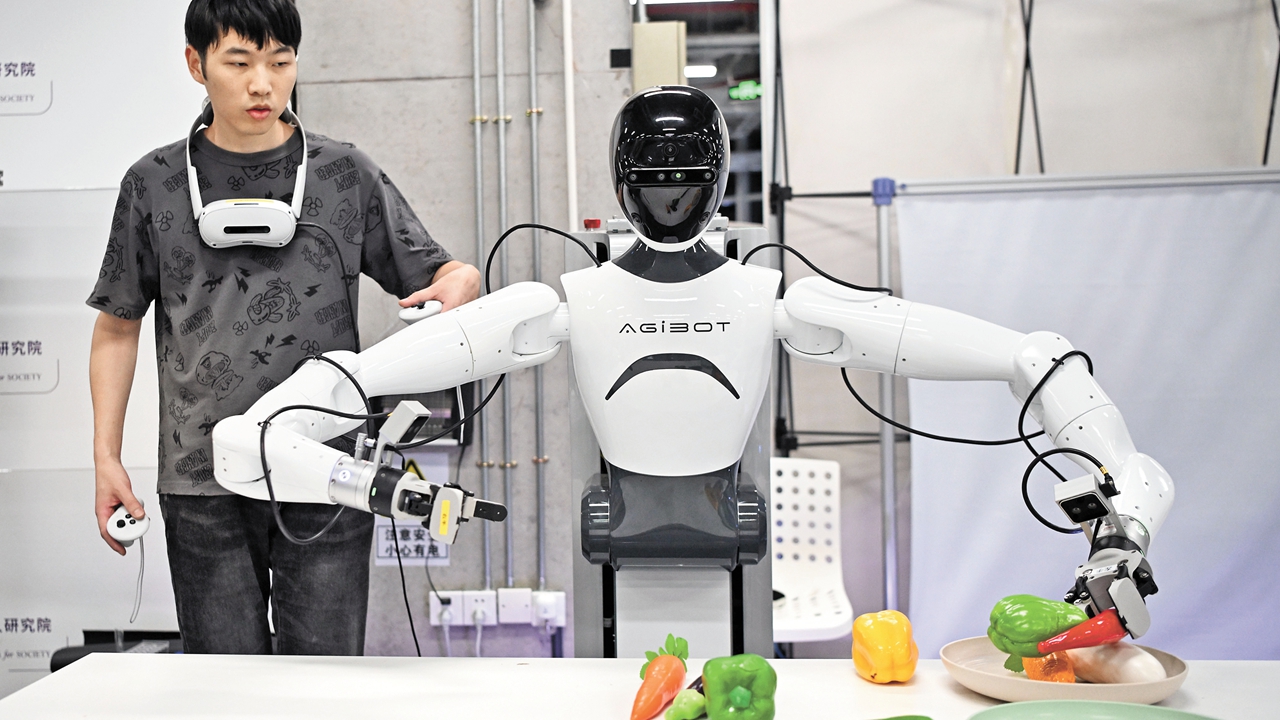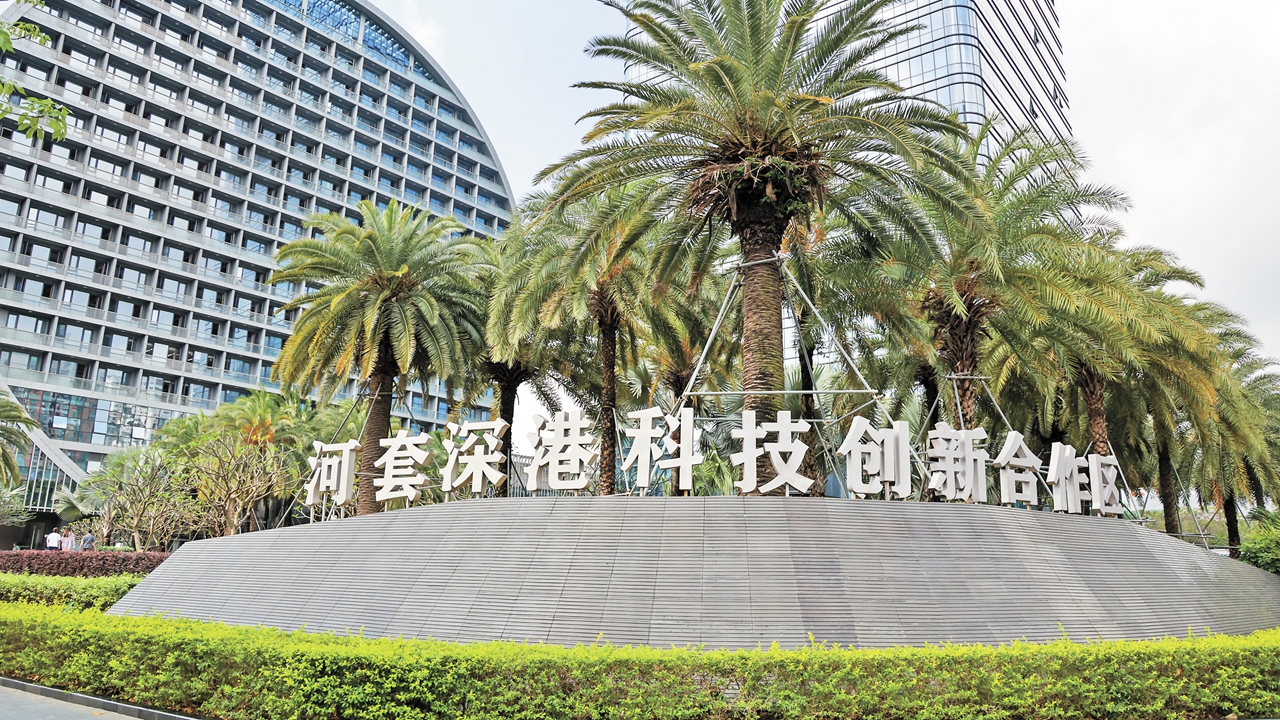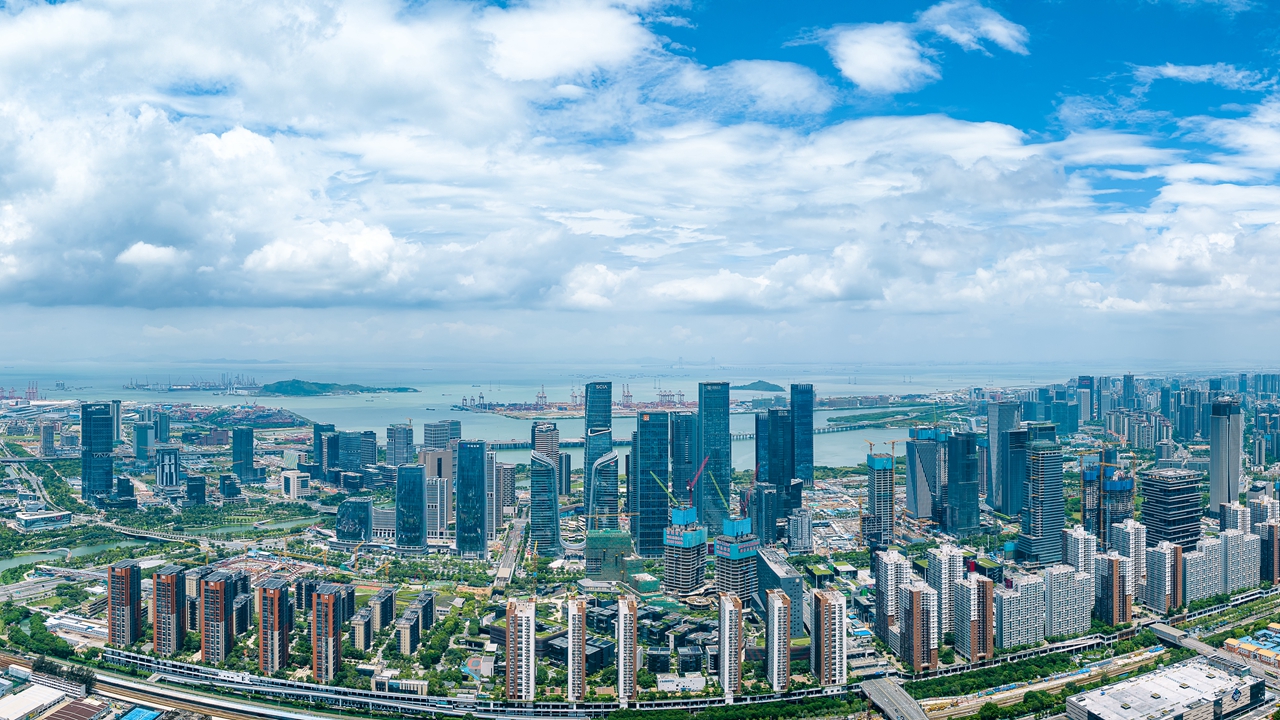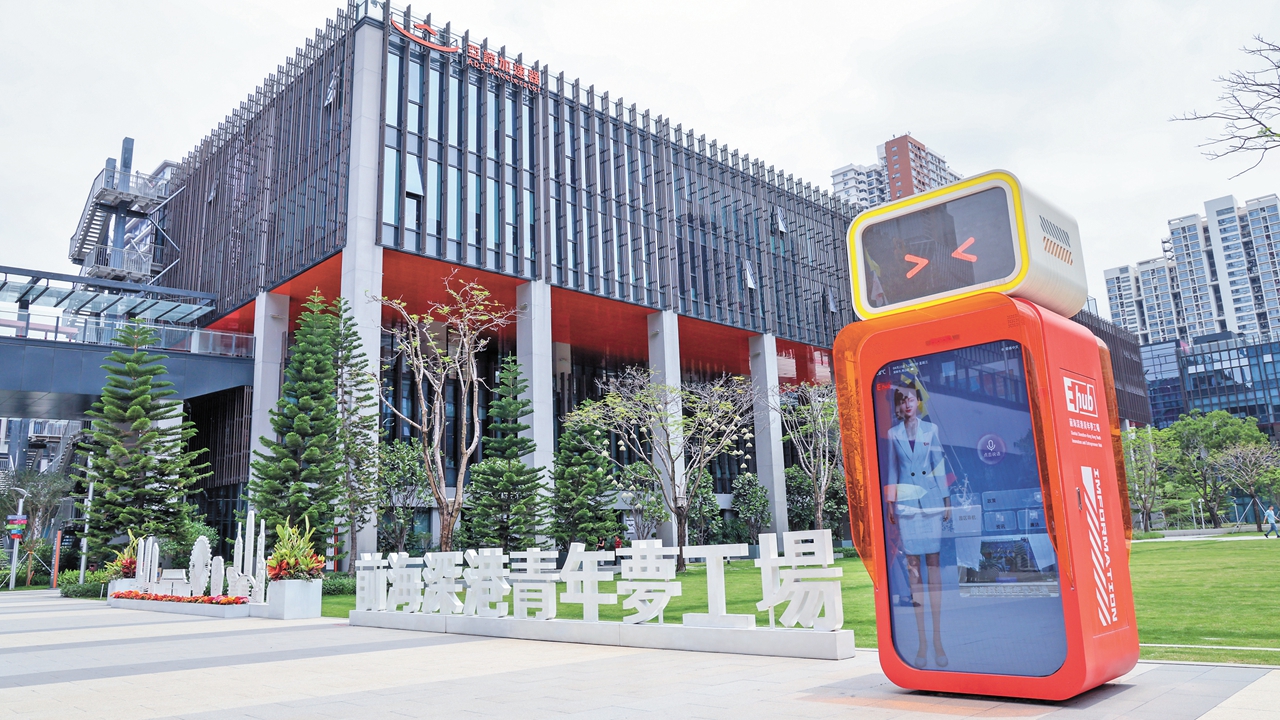Behind the new engine: Why SZ-HK-Guangzhou is now the top innovation cluster
Writer: | Editor: Lin Qiuying | From: | Updated: 2025-09-08
The Shenzhen-Hong Kong-Guangzhou innovation cluster in the Guangdong-Hong Kong-Macao Greater Bay Area (GBA) has topped the World Intellectual Property Organization’s (WIPO) 2025 Global Innovation Index (GII), overtaking Japan’s Tokyo-Yokohama cluster to claim the No. 1 spot for the first time.
 An employee tests a robot at the Embodied AI Robotics Innovation Center of Guangdong Province in Shenzhen's Nanshan District in this June 26, 2025 photo. Photos from Xinhua
An employee tests a robot at the Embodied AI Robotics Innovation Center of Guangdong Province in Shenzhen's Nanshan District in this June 26, 2025 photo. Photos from Xinhua
Since 2020, the Shenzhen-Hong Kong-Guangzhou innovation cluster had consistently ranked second globally. Its rise to No. 1 underscores the region’s dynamic innovation capabilities and the strong collaborative synergy within the GBA.
The 2025 innovation cluster ranking process included a new core indicator, venture capital transaction volume, alongside existing measures, including Patent Cooperation Treaty (PCT) international patent applications and the number of papers published by each cluster in Science Citation Index Expanded (SCIE) journals.
This new evaluation system emphasizes the output and layout of intellectual property and also highlights the transformation, application, and value realization of innovation outcomes, according to the provincial market supervision and administration bureau of Guangdong.

A view of the Hetao Shenzhen-Hong Kong Science and Technology Innovation Cooperation Zone, a vital innovation hub in the GBA which facilitates a seamless flow of resources, data, talent, and ideas.
Highlighting the importance of innovation clusters, Daren Tang, director general of WIPO, said that they serve as powerful pillars of national innovation ecosystems, helping to consolidate and strengthen the journey from idea to market.
Tang added that this year’s inclusion of venture capital activities has recalibrated the understanding of innovation strength, and the new results highlight which clusters are translating scientific research into economic outcomes.
In the GBA, intellectual property (IP) is treated not as the end goal of innovation but as a starting point for market application. For instance, the Shenzhen Institute of Advanced Technology (SIAT) under the Chinese Academy of Sciences produced an average of 4.7 patents per day over the past five years, with 1.3 patents transferred daily.
Liu Chenli, president of SIAT, emphasized that the value of IP lies in its market transformation. The institute focuses on key R&D projects, high-level academic papers, and high-quality patents, collaborating with institutions like the Shenzhen Stock Exchange and university technology transfer centers to align with industry needs.

GAC Group's composite-wing flying car is seen at the company's headquarters in Guangzhou in this Feb. 24, 2025 photo.
Shenzhen’s robust innovation ecosystem is further reflected in its substantial R&D investment, which reached 223.66 billion yuan (US$31.46 billion) in 2024, accounting for 6.46% of the city’s GDP. Enterprises contributed 93.3% of this investment, with industry leaders like Huawei, BYD, and Tencent driving both innovation and patent output while supporting the growth of smaller firms.
Data from the Guangdong provincial market supervision administration reveal that in 2024, over 170 universities and research institutions in Guangdong held 99,200 patents, with patent transfers and licensing exceeding 141,000 and 19,000 instances, respectively.
This transformation of IP into tangible assets is facilitated by institutional innovations within the GBA. The launch of an international IP transfer platform in Shenzhen last December has further accelerated cross-border IP transactions, with 121 high-value patents already reaching intent-to-transact agreements and 30 completed deals.

A well-connected road grid is seen at the Guiwan area in Qianhai.
Shenzhen has also been proactive in guiding patient capital toward early-stage and long-term hard-tech investments. Zhang Lin, head of Shenzhen’s science and technology innovation bureau, said, “Shenzhen is actively developing technology finance, having established industrial guidance funds at the 100-billion-yuan level, angel mother funds at the 10-billion-yuan level, and a 2-billion-yuan science and technology seed fund to build a financial service system covering the entire innovation lifecycle.”
Shenzhen also aims to make breakthroughs in core technologies, explore AI-assisted medical devices and low-altitude airspace management, and cultivate more high-growth, globally competitive enterprises, according to previous news reports.
Home to over 25,000 national high-tech enterprises, the city has led the country in patent authorizations for seven consecutive years, with 241,900 patents granted in 2024. The city has nurtured over 2,600 major AI enterprises and enacted China’s first local legislation on the low-altitude economy, launching nearly 300 drone routes with over 1.7 million cargo flights.
“Shenzhen has the foundation, conditions, and capability to lead in building a comprehensive innovation system,” Zhang Hu, executive vice governor of Guangdong Province, said earlier this year.
Ding Li, an economics researcher at the Guangdong Academy of Social Sciences, said, “The latest ranking indicates that the GBA, represented by the Shenzhen-Hong Kong-Guangzhou cluster, is shifting its development engine toward an ‘engineer dividend,’ centered on high-quality human capital. Large-scale, high-quality human capital accumulation, combined with an effective corporate innovation ecosystem, has unleashed tremendous innovation momentum and economic value.”
A spokesperson for China’s Hong Kong Special Administrative Region (HKSAR) government said that the innovation cluster ranking published by WIPO reflected the high international recognition of the innovative capacity of the Greater Bay Area.
Hong Kong will continue to closely collaborate with GBA sister cities to advance innovation and technology development and make greater contributions to building the country as an innovative nation, as well as advancing human progress, the spokesperson said.
Zhang Zhicheng, deputy director of the China National Intellectual Property Administration, said that the Shenzhen-Hong Kong-Guangzhou innovation cluster has ranked among the top global innovation clusters for many years, highlighting China’s vibrant innovation landscape.

The Qianhai-Shenzhen-Hong Kong Youth Innovation and Entrepreneur Hub, a platform for closer Guangdong-Hong Kong cooperation, is seen in this April 23, 2025 photo.
Chen Jiachang, vice minister of China’s Ministry of Science and Technology, said that Hong Kong boasts world-class research institutions, an international talent pool, and a robust intellectual property system, making it a key hub in the global innovation network. China’s Central Government fully supports the HKSAR in accelerating the development of an international innovation and technology center.
Established in 2017, the GII Cluster ranking identifies local concentrations of world-class innovation activity using three key metrics: international patent filings via WIPO’s Patent Cooperation Treaty, scientific publications, and, new this year, the number of venture capital deals.
This year’s report shows that the top 100 global innovation clusters are spread across 33 economies. China leads the pack with 24 clusters, followed by the United States with 22. Germany comes in third with 7 clusters, while India and the United Kingdom each have 4. Canada, Japan, and South Korea are tied with 3 clusters each. (Xinhua)